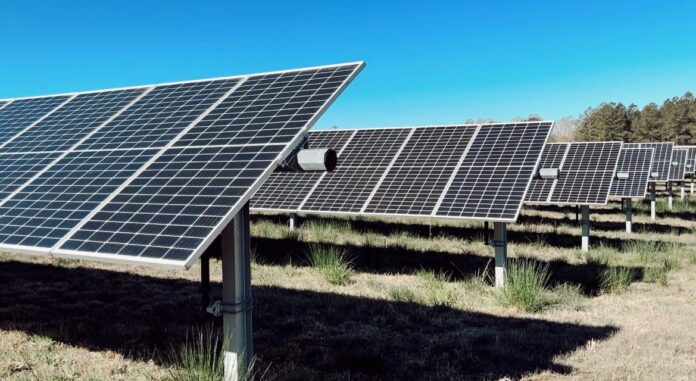College of Agriculture and Life Sciences researchers at the Hampton Roads Agricultural Research and Extension Center are working with the Virginia Department of Environmental Quality (DEQ) on a six-year grant to investigate runoff quality and quantity downstream from utility-scale solar sites.
“The study is intended to improve design guidance for modeling and monitoring of solar power sites across Virginia,” said David Sample, professor in biological systems engineering. “This is the first study to rely on runoff data collected in the field during storm events.”
During a storm, rain gathers on the solar panels, then falls to the ground, infiltrating vegetation below and raising this question: Should solar panel sites be considered impervious, such as a parking lot, or pervious, such as a grass field?
The DEQ’s initial assessment concluded that the panels should be considered 100 percent impervious and recommended best management practices accordingly to prevent water pollution.
The six-year, $6 million grant from the DEQ runs through 2029.
With the increase of solar energy use across the commonwealth, DEQ engaged the Hampton Roads team to validate its initial findings and provide improved design tools for field management.
The Agricultural Research and Extension Center relied on a geographic information system to create a visual map of the 1,000-acre site and plot where to install each monitoring system.
Using an automatic sampler, the team then collects runoff samples throughout a storm. Team members also developed a software program that enables them to control the monitoring system remotely using mobile devices. Once samples are collected, they are brought back to the lab and tested for sediment.
“The concentration of sediment in that receptacle is essentially an average across the entire storm, offering a more accurate representation than a concentrated measurement from one part of the storm,” Sample said.
In addition to this 1,000-acre site, Sample’s team is planning six more locations to provide best management practices to the DEQ and the solar industry.
By Alana Kirsch

